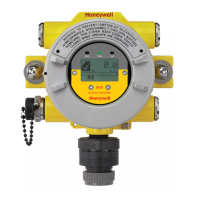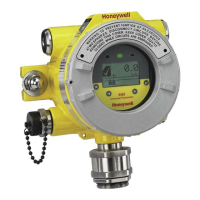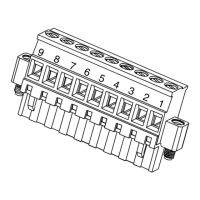XNX Universal Transmitter Quick Start Guide
54
Sensor
calibrated
to detect
Sensor used to detect
8* 7* 6* 5* 4* 3* 2* 1*
8* 1.00 1.24 1.52 1.89 2.37 2.98 3.78 4.83
7* 0.81 1.00 1.23 1.53 1.92 2.40 3.05 3.90
6* 0.66 0.81 1.00 1.24 1.56 1.96 2.49 3.17
5* 0.53 0.66 0.80 1.00 1.25 1.58 2.00 2.55
4* 0.42 0.52 0.64 0.80 1.00 1.26 1.60 2.03
3* 0.34 0.42 0.51 0.64 0.80 1.00 1.27 1.62
2* 0.26 0.33 0.40 0.50 0.63 0.79 1.00 1.28
1* 0.21 0.26 0.32 0.39 0.49 0.62 0.78 1.00
NOTE
Since combustible sensors require oxygen for correct operation, a
mixture of gas in air should be used for calibration purposes. Assuming
average performance of the sensor, the sensitivity information in Tables 1
to 3 is normally accurate to +20%.
EXAMPLE
If target gas to be detected is Butane and the calibration gas available is Methane
(50% LEL):
1. Lookupthestarratingforeachgasinthersttableonpage51:
Butane4*andMethane6*.
2. Checkthemetersettingsfor50%LELcalibrationgasinthesecond
table:78.
3. Themetershouldthereforebesetto78%togiveanaccurate
readingforButaneusing50%LELMethaneasacalibrationgas.
NOTE
It is important to calibrate the sensor at the approximate alarm levels to
allow for non-linearity of the sensors at gas concentrations above 80% LEL.

